Sudoku Refactoring Kata
Following Jay and Llewellyn on their sudoku refactoring, I have forked the sudoku repo and added the java version. As usual, I will post the snippets I found useful in doing the refactoring
- Original repo: https://github.com/zoran-horvat/sudoku-kata
- our forked repo: https://github.com/calgarysoftwarecrafters/sudoku-kata
- Jay and Llewellyn attempt on this: https://github.com/JayBazuzi/sudoku-kata/branches, part 1: https://www.youtube.com/watch?v=BVGH-dNn-tc&ab_channel=LlewellynFalco, and you can follow other parts in the channel
- our C# refactoring attempt: https://github.com/calgarysoftwarecrafters/sudoku-kata/tree/tvo/sample-refactor-solution-steps
- our Java refactoring attempt: coming soon….
Snippets
- Golden Master
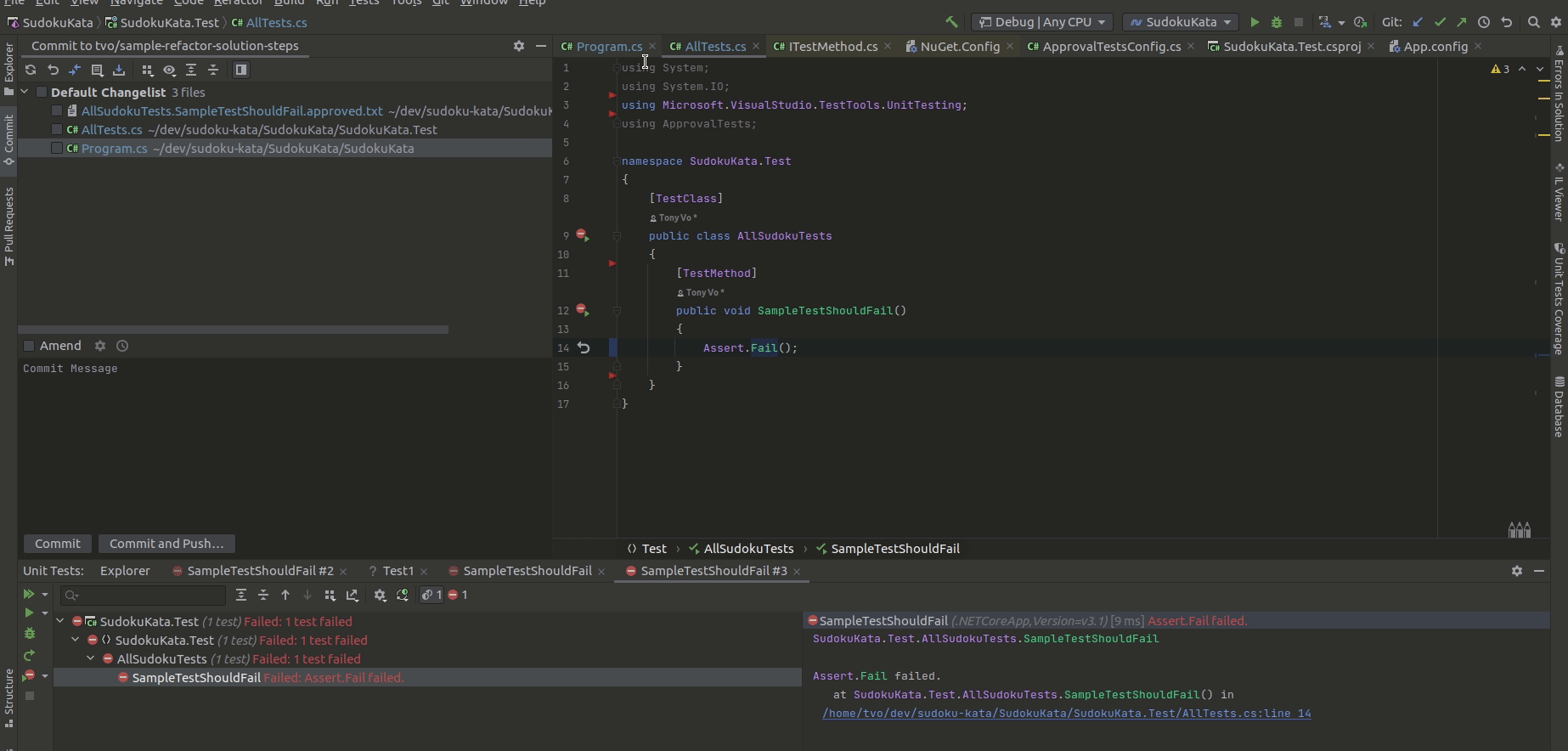
- Extract Method
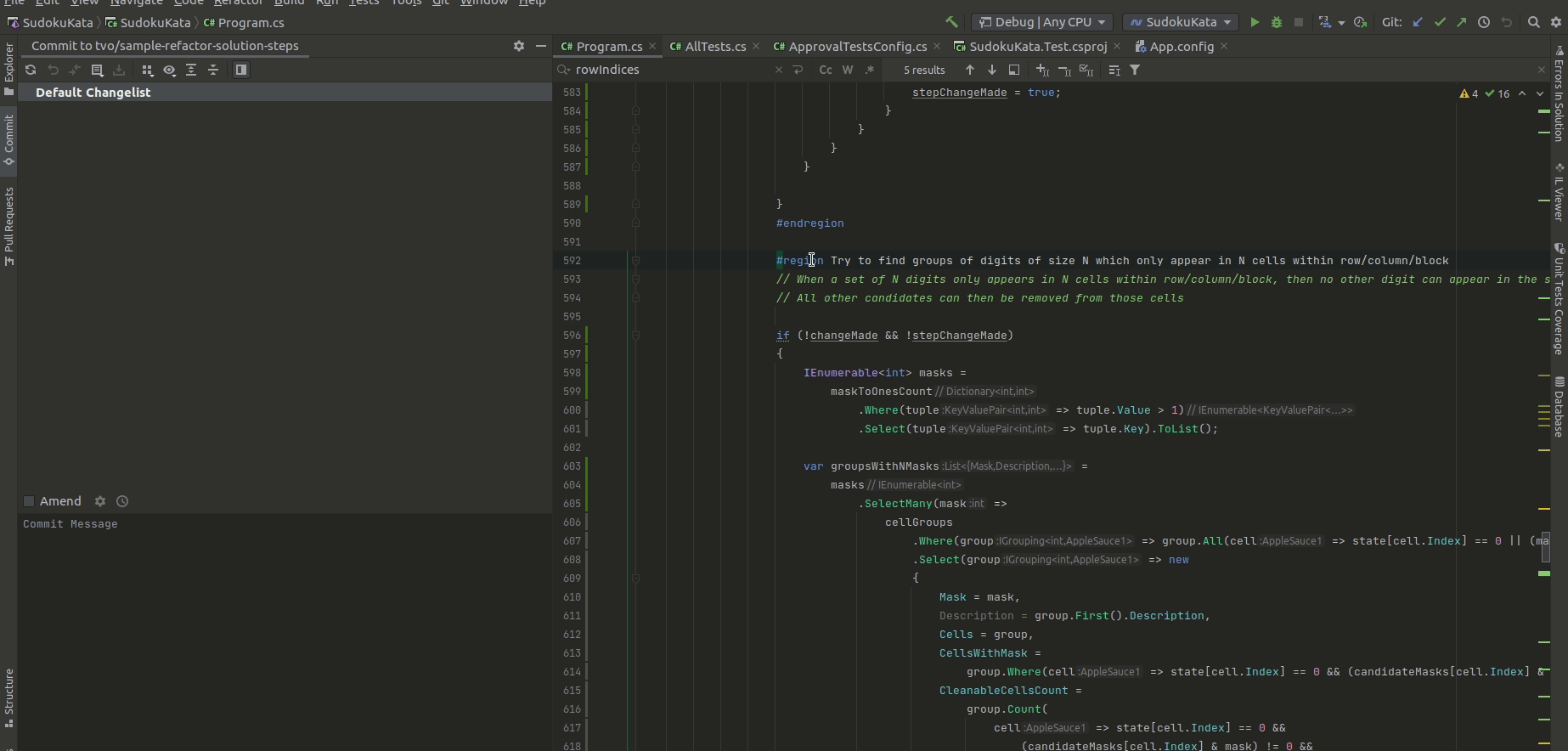
- Extract anonymous class to named class
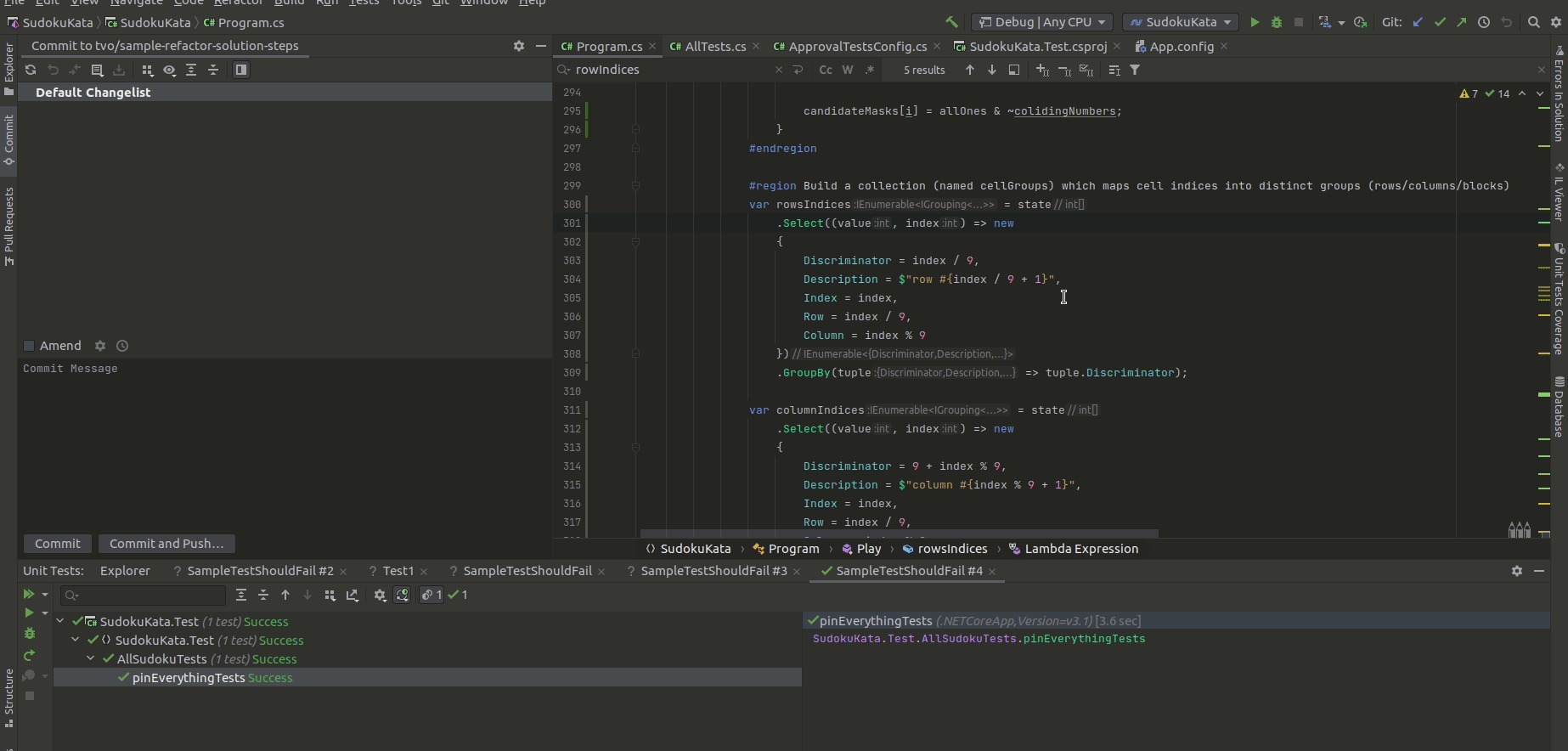
- Delete Comments
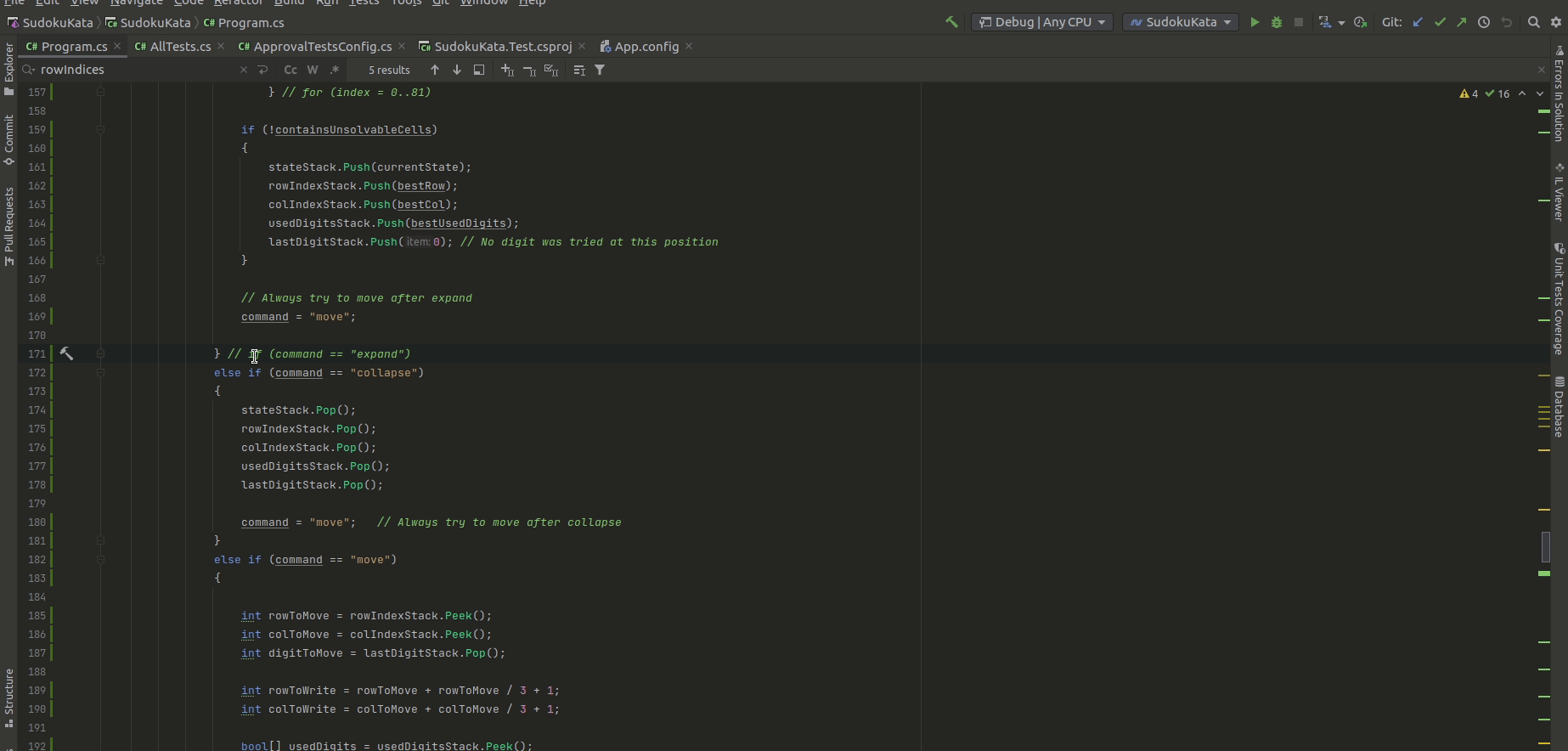
- convert parameters to object

- move the inner class to upper level

- specify type explicitly
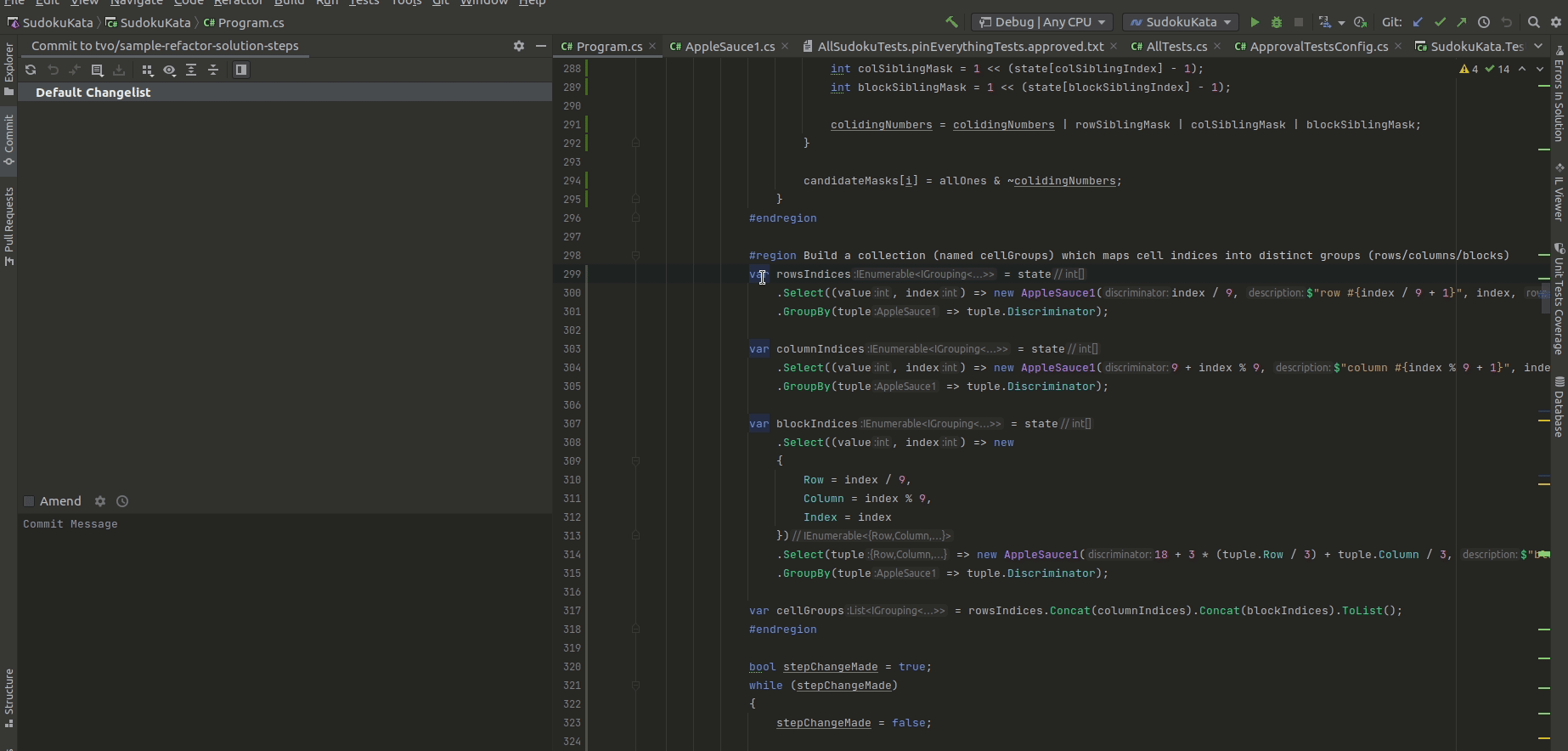
- transform out parameters to object

- move types to matching files

- inline variable

- extract variable

- move line above
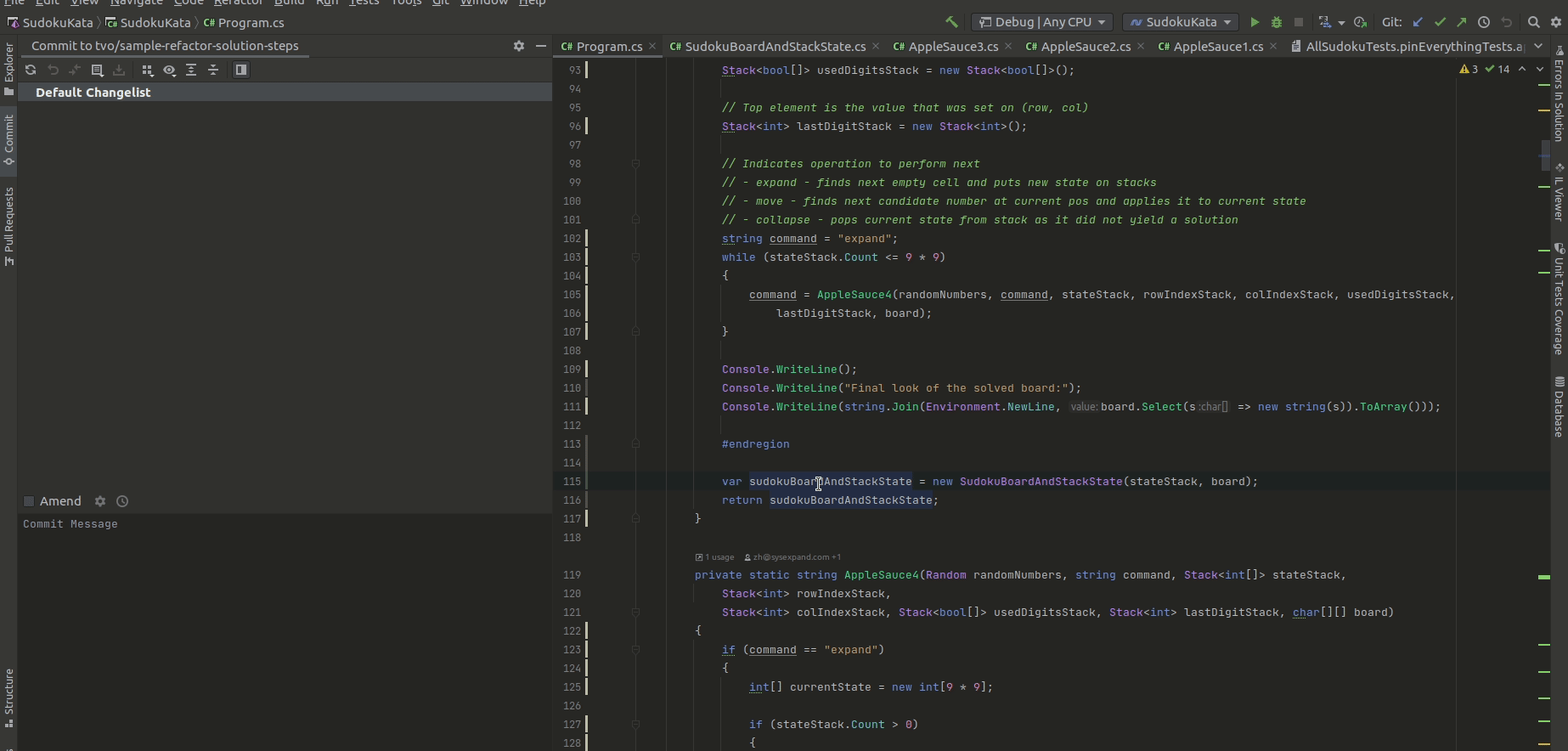
- move method to a different class
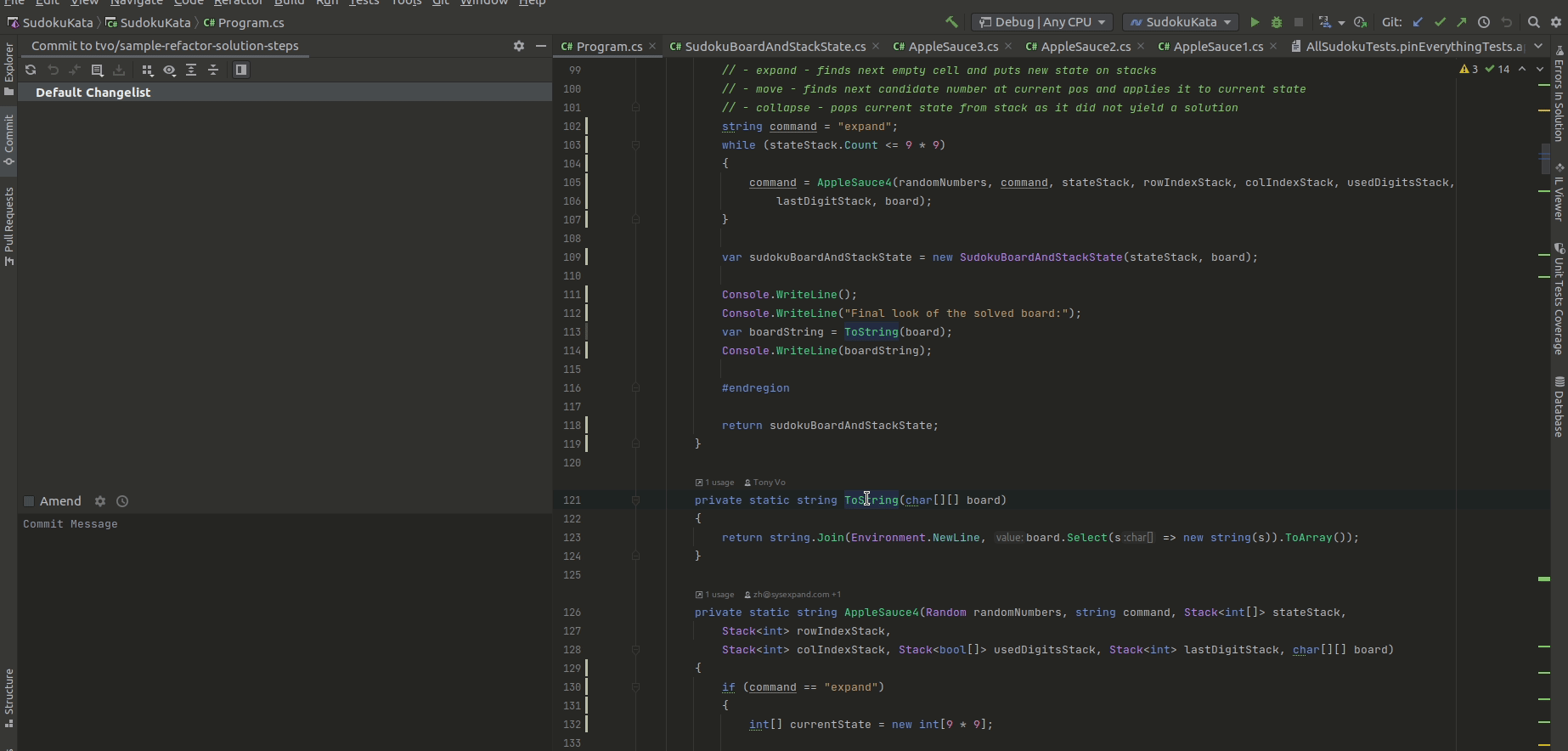
- replace static with non-static
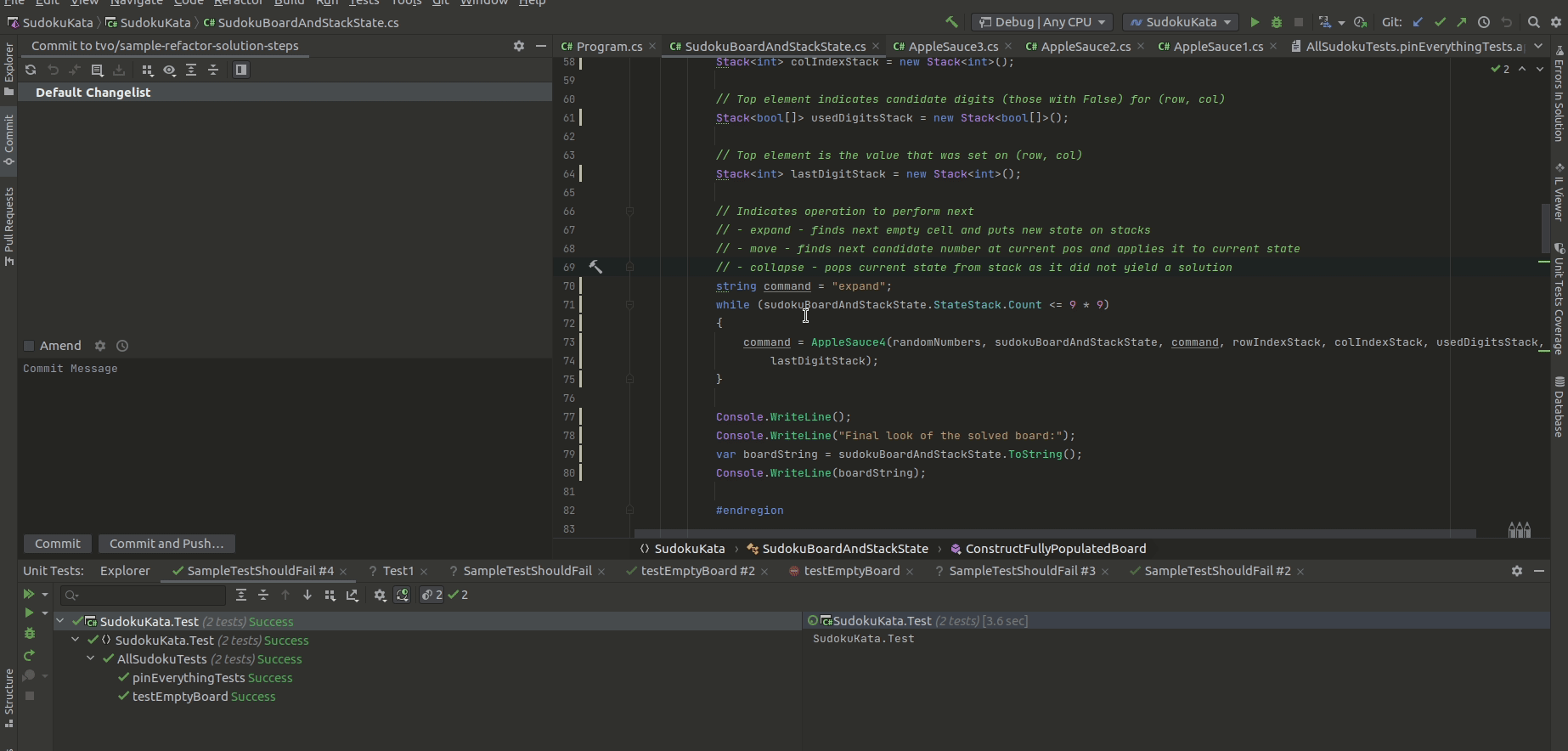
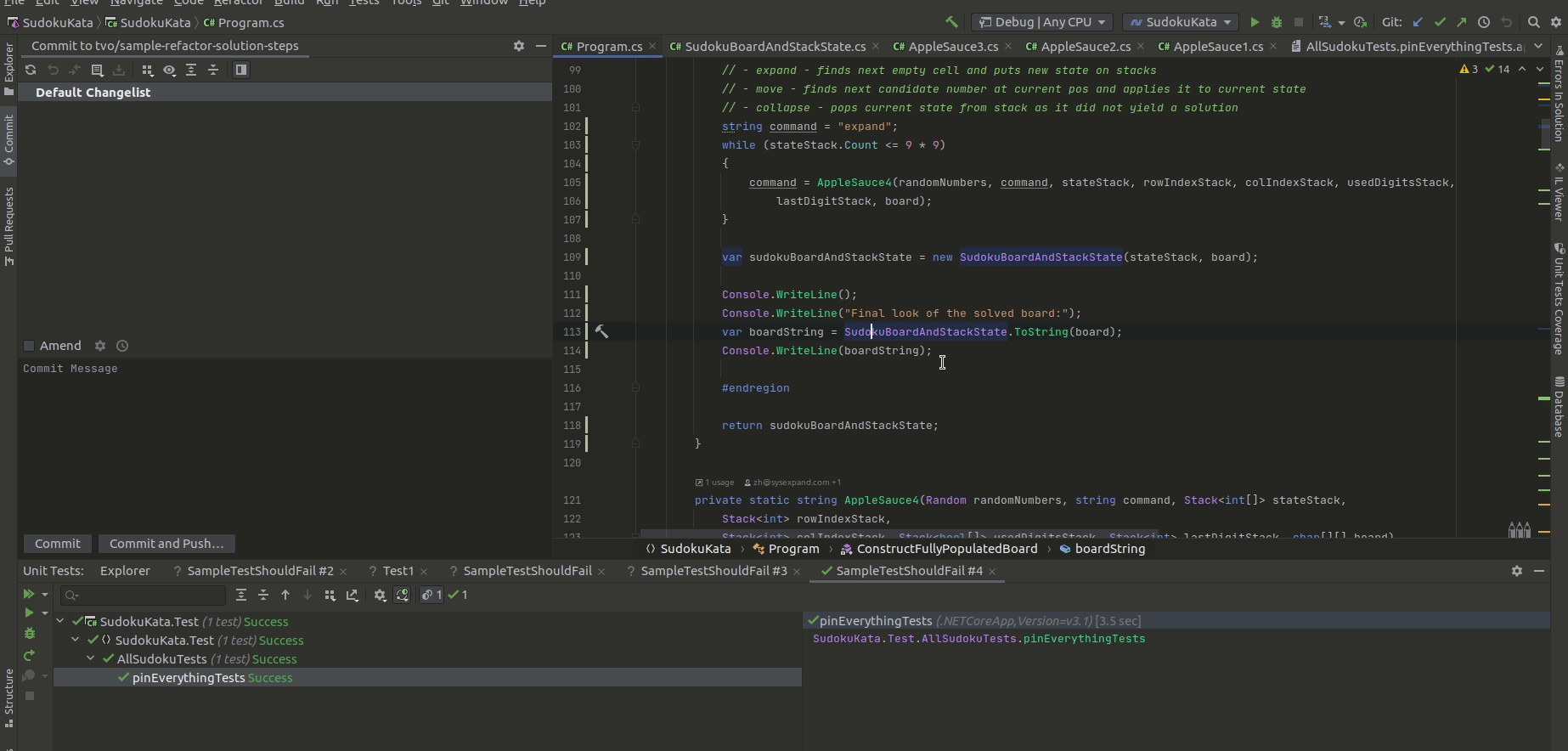
- split variable declaration assignment

- move method to the constructor
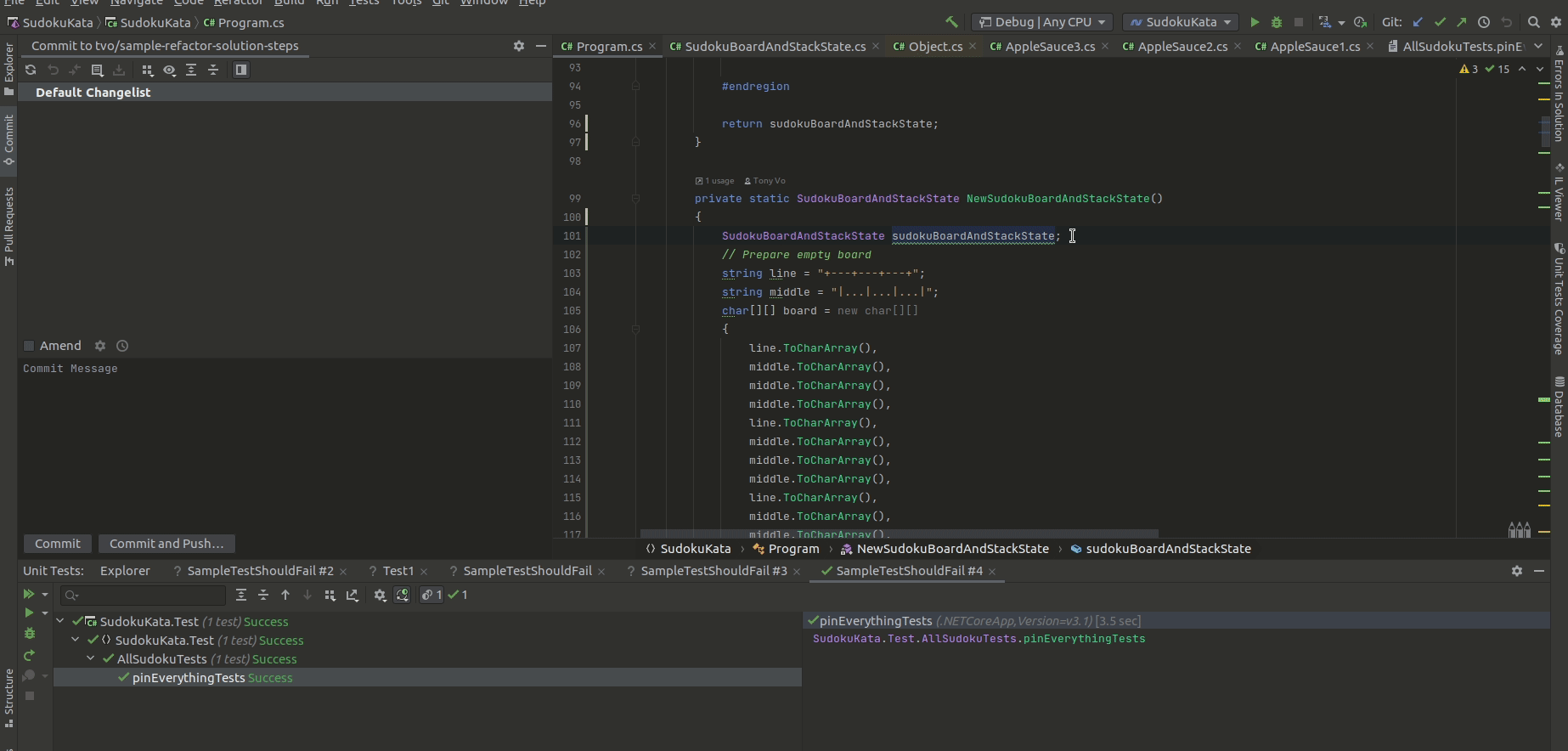
- isolate field assignment

- remove unused directives
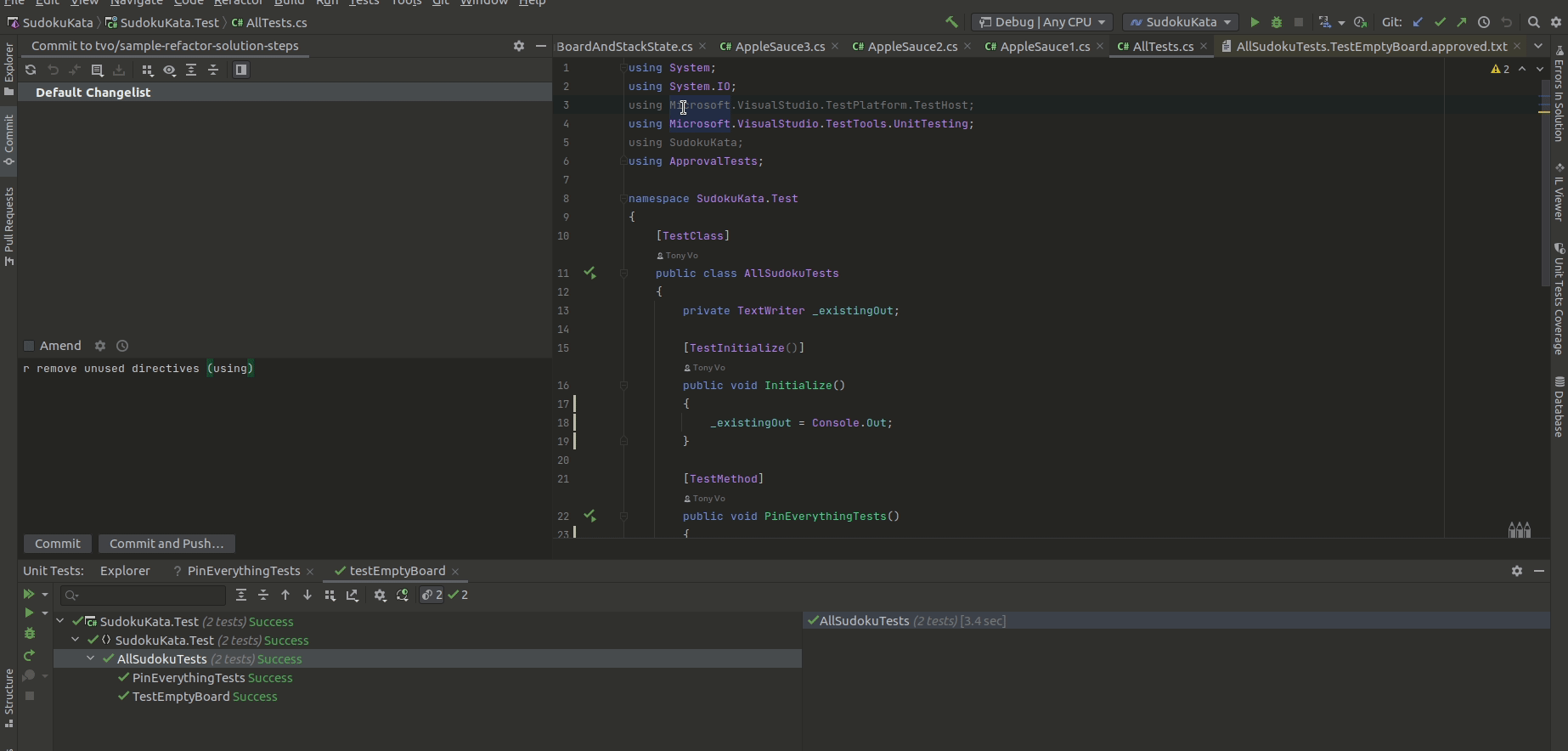
- extract constant

- extract class from a field
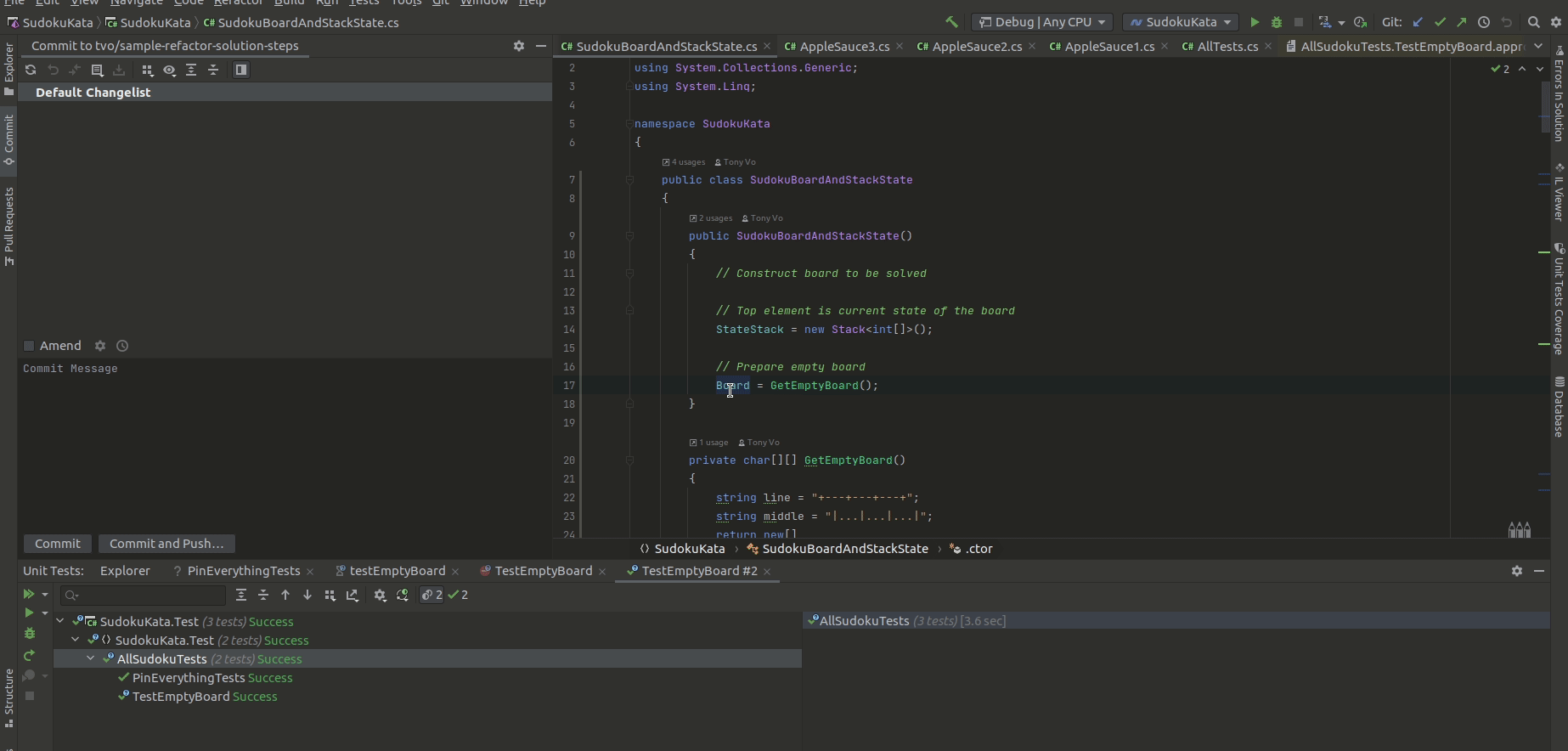
- return value early
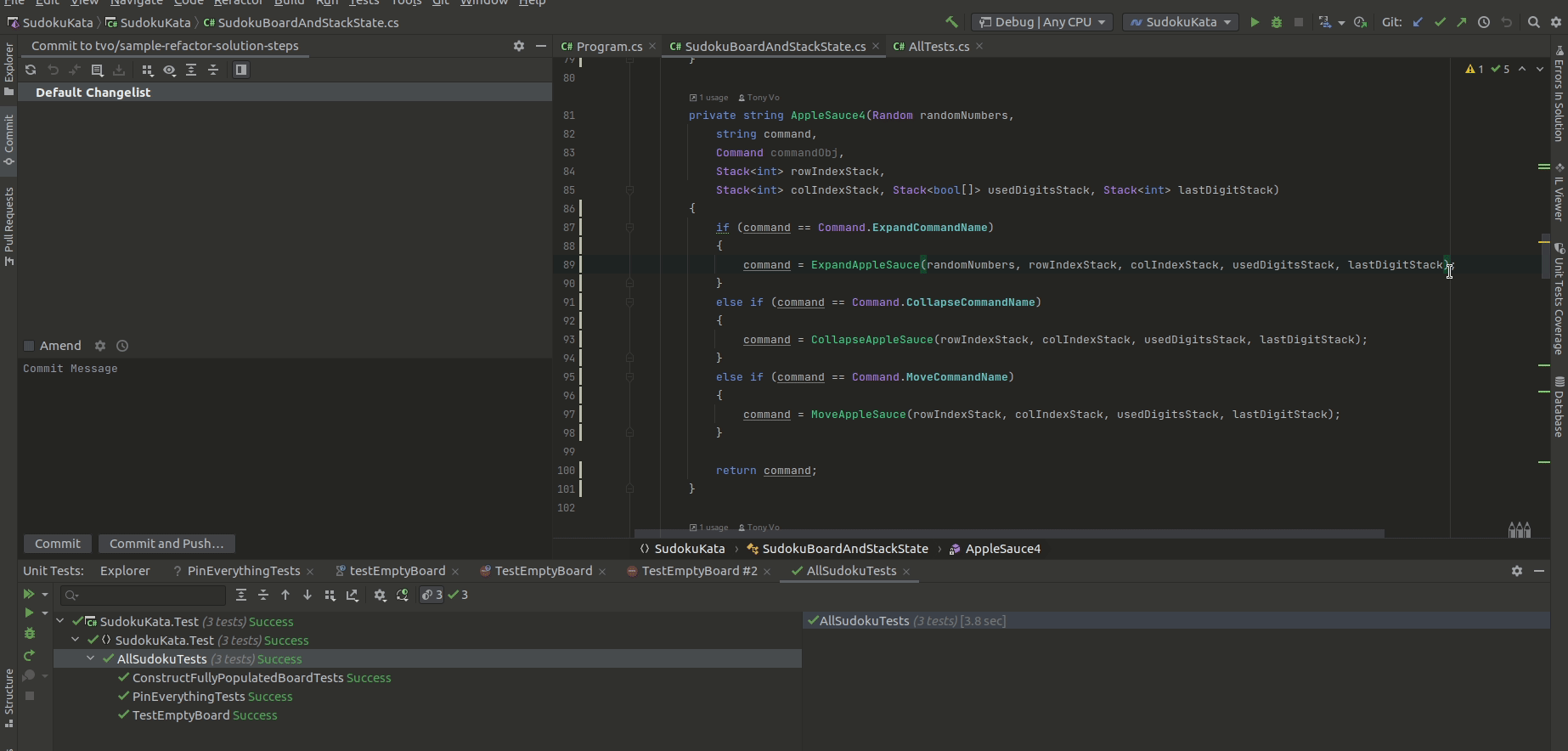
- remove redundant else

- surround with block

- asas
- asas
References
Jay and Llewellyn Series on Sudoku Refactoring
https://www.youtube.com/watch?v=BVGH-dNn-tc&ab_channel=LlewellynFalco
https://www.youtube.com/watch?v=8dyZHMuCiKc&ab_channel=LlewellynFalco
https://www.youtube.com/watch?v=WvSr6E-cO9M&ab_channel=LlewellynFalco
https://www.youtube.com/watch?v=GU_8eMJ8Xd0&ab_channel=LlewellynFalco
https://www.youtube.com/watch?v=f2mZ7v9O3c8&ab_channel=LlewellynFalco
https://www.youtube.com/watch?v=SUgp-msVqnA&ab_channel=LlewellynFalco
Comments
Post a Comment